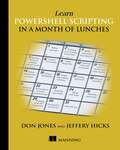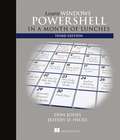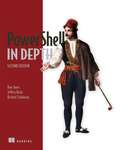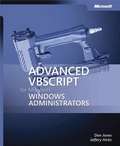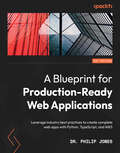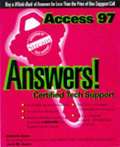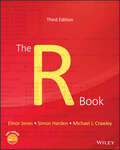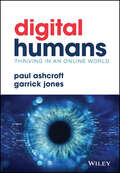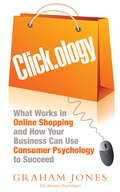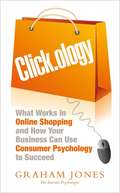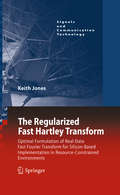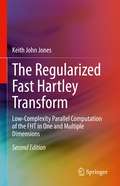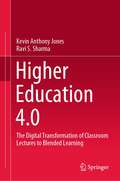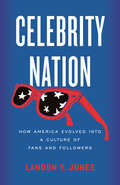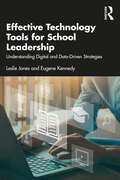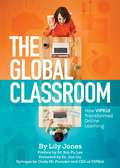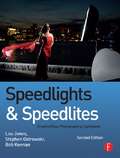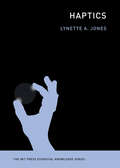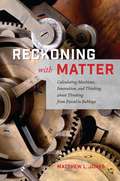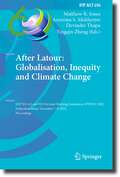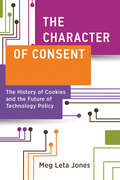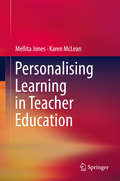- Table View
- List View
Advanced VBScript for Microsoft® Windows® Administrators
by Don Jones Jeffery HicksGet the in-depth guidance you need to take your Windows scripting skills to the next level. Enterprise-level Windows administrators who have experience with Windows scripting will learn advanced VBScript techniques. You will continue to build your skills by creating scripts to work with Microsoft Exchange Server, Microsoft SQL Server, Microsoft Operations Manager, and Microsoft Virtual Server. Coverage also includes the latest scripting updates for Windows XP and Windows Server 2003. Each chapter highlights powerful, ready-to-run, enterprise-level scripts, and the companion CD-ROM includes sample scripts and utilities to help you put your advanced scripting skills to work right away.
Learn PowerShell Scripting in a Month of Lunches
by Don Jones Jeffery HicksSummaryDiscover how scripting is different from command-line PowerShell, as you explore concrete hands-on examples in this handy guide. The book includes and expands on many of the techniques presented in Learn PowerShell Toolmaking in a Month of Lunches.Purchase of the print book includes a free eBook in PDF, Kindle, and ePub formats from Manning Publications.About the TechnologyAutomate it! With Microsoft's PowerShell language, you can write scripts to control nearly every aspect of Windows. Just master a few straightforward scripting skills, and you'll be able to eliminate repetitive manual tasks, create custom reusable tools, and build effective pipelines and workflows. Once you start scripting in PowerShell, you'll be amazed at how many opportunities you'll find to save time and effort. About the BookLearn PowerShell Scripting in a Month of Lunches teaches you how to expand your command-line PowerShell skills into effective scripts and tools. In 27 bite-size lessons, you'll discover instantly useful techniques for writing efficient code, finding and squashing bugs, organizing your scripts into libraries, and much more. Advanced scripters will even learn to access the .NET Framework, store data long term, and create nice user interfaces.What's InsideDesigning functions and scriptsEffective pipeline usageDealing with errors and bugsProfessional-grade scripting practicesAbout the Reader Written for devs and IT pros comfortable with PowerShell and Windows. About the AuthorsDon Jones is a PowerShell MVP, speaker, and trainer who has written dozens of books on information technology topics. Jeffery Hicks is a PowerShell MVP and an independent consultant, trainer, and author. Don and Jeff coauthored Manning's Learn Windows PowerShell in a Month of Lunches, Learn PowerShell Toolmaking in a Month of Lunches, and PowerShell in Depth. Table of ContentsPART 1 - INTRODUCTION TO SCRIPTING Before you begin Setting up your scripting environment WWPD: what would PowerShell do? Review: parameter binding and the PowerShell pipeline Scripting language crash course The many forms of scripting (and which to use) Scripts and security PART 2 - BUILDING A POWERSHELL SCRIPTAlways design first Avoiding bugs: start with a command Building a basic function and script module Going advanced with your function Objects: the best kind of output Using all the pipelines Simple help: making a comment Dealing with errors Filling out a manifest PART 3 - GROWN-UP SCRIPTING Changing your brain when it comes to scripting Professional-grade scripting An introduction to source control with git Pestering your script Signing your script Publishing your script PART 4 - ADVANCED TECHNIQUES Squashing bugs Making script output prettier Wrapping up the .NET Framework Storing data-not in Excel! Never the end
Learn Windows PowerShell in a Month of Lunches (Third Edition)
by Don Jones Jeffery HicksLearn Windows PowerShell in a Month of Lunches, Third Edition is an innovative tutorial designed for busy IT professionals. Just set aside one hour a day - lunchtime would be perfect - for a month, and you'll be automating Windows tasks faster than you ever thought possible. This updated edition covers PowerShell features that run on Windows 7, Windows Server 2008 R2 and later, PowerShell v3 and later, and includes v5 features like PowerShellGet.
PowerShell in Depth
by Don Jones Jeffery Hicks Richard SiddawaySummaryPowerShell in Depth, Second Edition is the go-to reference for administrators working with Windows PowerShell. Every major technique, technology, and tactic is carefully explained and demonstrated, providing a hands-on guide to almost everything an admin would do in the shell. Written by three experienced authors and PowerShell MVPs, this is the PowerShell book you'll keep next to your monitor—not on your bookshelf! Purchase of the print book includes a free eBook in PDF, Kindle, and ePub formats from Manning Publications.About the BookA Windows admin using PowerShell every day may not have the time to search the net every time he or she hits a snag. Wouldn't it be great to have a team of seasoned PowerShell experts ready to answer even the toughest questions? That's what you get with this book. PowerShell in Depth, Second Edition is the go-to reference for administrators working with Windows PowerShell. Every major technique, technology, and tactic is carefully explained and demonstrated, providing a hands-on guide to almost everything an admin would do in the shell. Written by PowerShell MVPs Don Jones, Jeffrey Hicks, and Richard Siddaway, each valuable technique was developed and thoroughly tested, so you'll be able to consistently write production-quality, maintainable scripts while saving hours of time and effort. This book assumes you know the basics of PowerShell. What's InsideAutomating tasksPackaging and deploying scriptsIntroduction to Desired State ConfigurationPowerShell securityCovers PowerShell version 3 and laterAbout the AuthorsDon Jones, Jeffery Hicks, and Richard Siddaway are Microsoft MVPs, trainers, and administrators. Collectively, they've authored nearly three dozen books on PowerShell and Windows administration.Table of ContentsPART 1 POWERSHELL FUNDAMENTALSIntroductionPowerShell hostsUsing the PowerShell help systemThe basics of PowerShell syntaxWorking with PSSnapins and modulesOperatorsWorking with objectsThe PowerShell pipelineFormattingPART 2 POWERSHELL MANAGEMENTPowerShell RemotingBackground jobs and schedulingWorking with credentialsRegular expressionsWorking with HTML and XML dataPSDrives and PSProvidersVariables, arrays, hash tables, and script blocksPowerShell securityAdvanced PowerShell syntaxPART 3 POWERSHELL SCRIPTING AND AUTOMATIONPowerShell's scripting languageBasic scripts and functionsCreating objects for outputScopePowerShell workflowsAdvanced syntax for scripts and functionsScript modules and manifest modulesCustom formatting viewsCustom type extensionsData language and internationalizationWriting helpError handling techniquesDebugging tools and techniquesFunctions that work like cmdletsTips and tricks for creating reportsPART 4 ADVANCED POWERSHELLWorking with the Component Object Model (COM) Working with .NET Framework objectsAccessing databasesProxy functionsBuilding a GUIWMI and CIMWorking with the webDesired State Configuration
Advanced VBScript for Microsoft® Windows® Administrators
by Don Jones Jeffrey HicksTake ultimate control of system administration by learning advanced scripting techniques from two experts. Experienced Windows script-writers can move beyond the basics with hands-on instruction, advanced techniques, and best practices for using Microsoft Visual Basic Scripting Edition (VBScript) as an enterprise-level administrative tool. You also get ready-to-use scripts and an eBook on CD. Discover how to: Build your own scripting components and libraries Use digital signatures and certificates to create security-enhanced scripts Retrieve information from Active Directory with advanced ADSI techniques Manage your Windows environment with advanced Windows Management Instrumentation (WMI) techniques Use scripts to back up, copy, restore, and set permissions for your Group Policy environment Write scripts to access databases with ADO Build hypertext applications for script graphical interfaces Develop scripts that work with Microsoft Exchange Server and Microsoft Operations Manager Exploit the scripting updates for Windows XP and Windows Server 2003 CD features: More than 100 sample scripts to adapt for your own work Fully searchable eBook A Note Regarding the CD or DVD The print version of this book ships with a CD or DVD. For those customers purchasing one of the digital formats in which this book is available, we are pleased to offer the CD/DVD content as a free download via O'Reilly Media's Digital Distribution services. To download this content, please visit O'Reilly's web site, search for the title of this book to find its catalog page, and click on the link below the cover image (Examples, Companion Content, or Practice Files). Note that while we provide as much of the media content as we are able via free download, we are sometimes limited by licensing restrictions. Please direct any questions or concerns to booktech@oreilly.com.
A Blueprint for Production-Ready Web Applications: Leverage industry best practices to create complete web apps with Python, TypeScript, and AWS
by Dr. Philip JonesGo from setting up your production environment, to building an app, to deploying it to the web using industry best practices along the wayKey FeaturesFollow a blueprint to build production-ready apps that can be adapted and tailored to your requirementsLearn how to combine a React frontend with a Quart backend, and run them in Docker on AWSAdopt industry best practices that can be used in your personal as well as work projectsBook DescriptionA Blueprint for Production-Ready Web Applications will help you expand upon your coding knowledge and teach you how to create a complete web application. Unlike other guides that focus solely on a singular technology or process, this book shows you how to combine different technologies and processes as needed to meet industry standards.You'll begin by learning how to set up your development environment, and use Quart and React to create the backend and frontend, respectively. This book then helps you get to grips with managing and validating accounts, structuring relational tables, and creating forms to manage data. As you progress through the chapters, you'll gain a comprehensive understanding of web application development by creating a to-do app, which can be used as a base for your future projects. Finally, you'll find out how to deploy and monitor your application, along with discovering advanced concepts such as managing database migrations and adding multifactor authentication.By the end of this web development book, you'll be able to apply the lessons and industry best practices that you've learned to both your personal and work projects, allowing you to further develop your coding portfolio.What you will learnSet up an optimum development environment for building web appsCreate a working backend Quart app that can be tailored to suit your needsBuild a user management system with passwords and authenticationBuild a single-page application with React Router and FormikDeploy your app to AWS and understand the importance of monitoringDiscover advanced concepts such as managing database migrationsWho this book is forThis book is for software engineers like recent computer science or bootcamp graduates who already know how to program and want to learn how to build an app by following standard industry processes such as continuous integration and continuous deployment (CI/CD). Working knowledge of TypeScript/JavaScript, Python, HTML, CSS, and SQL is needed. You don't, however, need prior experience with Quart, React, AWS, and all other specific technologies and processes, as they will be introduced in the book.
Access 97 Answers! Certified Tech Support
by Edward Jones Jarrel JoneskAnswers to the 1,000 most commonly asked questions about Microsoft Access. Most answers are provided in step-by-step text format with not a lot of diagrams and figures.
The R Book
by Elinor Jones Simon Harden Michael J. CrawleyA start-to-finish guide to one of the most useful programming languages for researchers in a variety of fields In the newly revised Third Edition of The R Book, a team of distinguished teachers and researchers delivers a user-friendly and comprehensive discussion of foundational and advanced topics in the R software language, which is used widely in science, engineering, medicine, economics, and other fields. The book is designed to be used as both a complete text—readable from cover to cover—and as a reference manual for practitioners seeking authoritative guidance on particular topics. This latest edition offers instruction on the use of the RStudio GUI, an easy-to-use environment for those new to R. It provides readers with a complete walkthrough of the R language, beginning at a point that assumes no prior knowledge of R and very little previous knowledge of statistics. Readers will also find: A thorough introduction to fundamental concepts in statistics and step-by-step roadmaps to their implementation in R; Comprehensive explorations of worked examples in R; A complementary companion website with downloadable datasets that are used in the book; In-depth examination of essential R packages. Perfect for undergraduate and postgraduate students of science, engineering, medicine economics, and geography, The R Book will also earn a place in the libraries of social sciences professionals.
Digital Humans: Thriving in an Online World
by Garrick Jones Paul AshcroftEmbrace the Human Side of Organisational Digital Transformation Digital Humans: Thriving in an Online World is an insightful, engaging and interdisciplinary discussion of how best to transform your organisation into a nimble, digital enterprise with human beings firmly established at the centre of it. The authors draw on complexity theory, anthropology, history, organisational transformation and behavioural science to demonstrate the characteristics that define successful digital organisations. You’ll discover the importance of focusing on human beings even as you make the shift to digital and learn to understand the importance of our new digital ecosystems. Illuminating case studies and examples of organisations that have successfully made the jump to digital are explored and the book presents new and effective ways to make strategic decisions about your company’s future based on our new physical-digital hybrid reality. A can’t-miss blueprint to a market environment and world that’s increasingly fast-moving, complex and rewarding, Digital Humans will find a place in the libraries of managers, executives, and business leaders looking for an engaging roadmap to digital transformation that wouldn’t have us leave our humanity behind.
Clickology: What Works in Online Shopping and How Your Business can use Consumer Psychology to Succeed
by Graham JonesThe world of shopping is at a crossroads. While online sales are growing at runaway speed, many businesses are finding themselves left behind, discovering that what has worked so long in offline does not work online, and what works online does not necessarily translate offline: it simply doesn't click. Packed with tips, guidance and real-world case studies from online niche stores Bellabox and Facetache to the universal appeal of Groupon, and from offline discount stores Dollar Tree and Poundland to the luxury Selfridges in this informative book internet psychologist Graham Jones reveals: *Why most online shopping carts are abandoned before a purchase is ever made and how to stop this happening in your store *Why having a centrally positioned search box aids navigation and increases sales *Why offering free shipping online pays off * Why it makes sense to be sociable He also reveals the why of consumer behaviour online, how it differs from offline behaviour, and how you can use this understanding to create a store that connects with and engages your customers on both a practical and a psychological level a store that demonstrates true clickology. Using an accessible five-step CLICK system for turning clicks into dollars, the book shows how to learn from the experience of both on- and offline, and apply lessons to both. Whether you re running a small business website or that of a big corporation, whether you're operating purely online or offline too, Clickology shows you how to thrive.
Clickology: What Works in Online Shopping and How Your Business can use Consumer Psychology to Succeed
by Graham JonesThe world of shopping is at a crossroads. While online sales are growing at runaway speed, many businesses are finding themselves left behind, discovering that what has worked so long in offline does not work online, and what works online does not necessarily translate offline: it simply doesn't click. Packed with tips, guidance and real-world case studies from online niche stores Bellabox and Facetache to the universal appeal of Groupon, and from offline discount stores Dollar Tree and Poundland to the luxury Selfridges in this informative book internet psychologist Graham Jones reveals: *Why most online shopping carts are abandoned before a purchase is ever made and how to stop this happening in your store *Why having a centrally positioned search box aids navigation and increases sales *Why offering free shipping online pays off * Why it makes sense to be sociable He also reveals the why of consumer behaviour online, how it differs from offline behaviour, and how you can use this understanding to create a store that connects with and engages your customers on both a practical and a psychological level a store that demonstrates true clickology. Using an accessible five-step CLICK system for turning clicks into dollars, the book shows how to learn from the experience of both on- and offline, and apply lessons to both. Whether you re running a small business website or that of a big corporation, whether you're operating purely online or offline too, Clickology shows you how to thrive.
Clickology
by Graham JonesOnline shopping continues to grow at an astounding rate: in 2012, more than $1 trillion was spent in online retailers alone. The nature of shopping is drastically changing, but with so little information on how best to interact with online customers, how are businesses to succeed?With Click.ology, internet psychologist Graham Jones has filled that gap. Through years of research into Internet psychology and online consumer habits, Jones has written the first how-to of its kind for online businesses. With his C.L.I.C.K. system, businesses will learn the crucial ways in which online shopping differs from traditional brick-and-mortar salesmanship and how to tweak their websites to avoid the dreaded "abandoned shopping cart." Jones tackles tricky psychological subjects such as priming customers for a certain price point and the social aspect of online shopping in a way that makes his strategies easy to implement. In addition to these essential tips, Jones investigates the fast-paced future of ecommerce and what businesses can do to stay ahead of the game. In an online world where customers make their choices in a matter of seconds, Click.ology distills the essentials every company in the online economy needs to know in order to turn clicks into dollars.Graham Jones is an Internet psychologist who helps businesses understand the online behavior of their customers and website visitors. He was one of the first psychologists in the world to start investigating the way human behavior has adapted to the online world. He lives in the United Kingdom.
Python for Unix and Linux System Administration
by Jeremy Jones Noah GiftPython is an ideal language for solving problems, especially in Linux and Unix networks. With this pragmatic book, administrators can review various tasks that often occur in the management of these systems, and learn how Python can provide a more efficient and less painful way to handle them. Each chapter in Python for Unix and Linux System Administration presents a particular administrative issue, such as concurrency or data backup, and presents Python solutions through hands-on examples. Once you finish this book, you'll be able to develop your own set of command-line utilities with Python to tackle a wide range of problems. Discover how this language can help you: Read text files and extract information Run tasks concurrently using the threading and forking options Get information from one process to another using network facilities Create clickable GUIs to handle large and complex utilities Monitor large clusters of machines by interacting with SNMP programmatically Master the IPython Interactive Python shell to replace or augment Bash, Korn, or Z-Shell Integrate Cloud Computing into your infrastructure, and learn to write a Google App Engine Application Solve unique data backup challenges with customized scripts Interact with MySQL, SQLite, Oracle, Postgres, Django ORM, and SQLAlchemy With this book, you'll learn how to package and deploy your Python applications and libraries, and write code that runs equally well on multiple Unix platforms. You'll also learn about several Python-related technologies that will make your life much easier.
The Regularized Fast Hartley Transform
by Keith JonesThe Regularized Fast Hartley Transform provides the reader with the tools necessary to both understand the proposed new formulation and to implement simple design variations that offer clear implementational advantages, both practical and theoretical, over more conventional complex-data solutions to the problem. The highly-parallel formulation described is shown to lead to scalable and device-independent solutions to the latency-constrained version of the problem which are able to optimize the use of the available silicon resources, and thus to maximize the achievable computational density, thereby making the solution a genuine advance in the design and implementation of high-performance parallel FFT algorithms.
The Regularized Fast Hartley Transform: Low-Complexity Parallel Computation of the FHT in One and Multiple Dimensions
by Keith John JonesThis book describes how a key signal/image processing algorithm – that of the fast Hartley transform (FHT) or, via a simple conversion routine between their outputs, of the real‑data version of the ubiquitous fast Fourier transform (FFT) – might best be formulated to facilitate computationally-efficient solutions. The author discusses this for both 1-D (such as required, for example, for the spectrum analysis of audio signals) and m‑D (such as required, for example, for the compression of noisy 2-D images or the watermarking of 3-D video signals) cases, but requiring few computing resources (i.e. low arithmetic/memory/power requirements, etc.). This is particularly relevant for those application areas, such as mobile communications, where the available silicon resources (as well as the battery-life) are expected to be limited. The aim of this monograph, where silicon‑based computing technology and a resource‑constrained environment is assumed and the data is real-valued in nature, has thus been to seek solutions that best match the actual problem needing to be solved.
Higher Education 4.0: The Digital Transformation of Classroom Lectures to Blended Learning
by Kevin Anthony Jones Sharma RavishankarThis book chronicles a 10-year introduction of blended learning into the delivery at a leading technological university, with a longstanding tradition of technology-enabled teaching and learning, and state-of-the-art infrastructure. Hence, both teachers and students were familiar with the idea of online courses. Despite this, the longitudinal experiment did not proceed as expected. Though few technical problems, it required behavioural changes from teachers and learners, thus unearthing a host of socio-technical issues, challenges, and conundrums. With the undercurrent of design ideals such as “tech for good”, any industrial sector must examine whether digital platforms are credible substitutes or at best complementary. In this era of Industry 4.0, higher education, like any other industry, should not be about the creative destruction of what we value in universities, but their digital transformation. The book concludes with an agenda for large, repeatable Randomised Controlled Trials (RCTs) to validate digital platforms that could fulfil the aspirations of the key stakeholder groups – students, faculty, and regulators as well as delving into the role of Massive Open Online Courses (MOOCs) as surrogates for “fees-free” higher education and whether the design of such a HiEd 4.0 platform is even a credible proposition. Specifically, the book examines the data-driven evidence within a design-based research methodology to present outcomes of two alternative instructional designs evaluated – traditional lecturing and blended learning. Based on the research findings and statistical analysis, it concludes that the inexorable shift to online delivery of education must be guided by informed educational management and innovation.
Celebrity Nation: How America Evolved into a Culture of Fans and Followers
by Landon JonesA former People magazine editor reveals how our cult of celebrity has shaped our politics, our culture, and our personal lives—for better or worseFrom the writer and editor who coined the term &“baby boomer&” comes Celebrity Nation, an exploration into how and why fame no longer stems only from heroic achievements but from the number of &“likes&” and shares—and what this change means for American culture. Landon Jones—who spent decades in &“celebrityland&” only to emerge, like Alice, blinking in the sunlight—brings a personal and first-person perspective on fame and its dark underbelly, complicated even further by the arrival of the internet and social media.Jones draws on his experience as the former managing editor of People magazine to bolster his account with profiles of celebrities he knew personally, ranging from Malcolm X to Princess Diana, as well as observations about contemporary social media stars like Kim Kardashian and computer-generated macro-influencer Miquela, a self-proclaimed &“19-year-old Robot living in LA.&” In analyzing the stories of over 75 celebrities, spanning decades and industries, Jones shows how celebrity has been wielded as a weapon of mass distraction to spawn narcissism, harm, and loneliness.And yet, in these stories we also see a path forward. Jones highlights luminaries like Nobel Peace prize winner Maria Ressa and lauded environmental activist Greta Thunberg, who have effected meaningful change not by glorifying themselves but by turning to their communities for action. A lively analysis of celebrity culture&’s impact on nearly every facet of our lives, Celebrity Nation helps us to recognize how the apparatus of fame operates.
Effective Technology Tools for School Leadership: Understanding Digital and Data-Driven Strategies
by Leslie Jones Eugene KennedyThis book prepares educational leaders with the knowledge needed to critically evaluate, select, and use technological tools to be effective school leaders. Authors Jones and Kennedy explore the technology tools needed to support the full range of responsibilities of a school leader, including management and administration, personnel and evaluation, security and safety, instructional leadership, organizational culture and climate, external relationships, and action research. Each chapter unpacks advantages and pitfalls of various technological tools and includes case scenarios that contextualize these ideas for readers. Chapter content is also aligned with The Professional Standards for Educational Leaders (PSEL), the National Educational Leadership Preparation Standards (NELP), and the International Society of Technology Standard in Education (ISTE) standards. This timely and important book adds to the toolbox for educators preparing to become effective and cutting-edge school leaders.
The Global Classroom: How VIPKID Transformed Online Learning
by Lily JonesBehind the Scenes of a Revolution in EducationIn 2013, Cindy Mi, a high school dropout turned English teacher, founded VIPKid with an innovative vision for education: facilitating personalized, one-on-one sessions with students and tutors from around the world. Six years later, her brainchild boasts a $3 billion valuation and connects approximately 500,000 students with 60,000 teachers worldwide. Thisis the story of a revolution in education.The Global Classroom takes readers inside the startup&’s history, educational innovation, and unprecedented success. With a foreword from Mi, the book takes a deep dive into a new educational model and investigates how the company&’s platform has diversified to serve the needs of students from countries across the globe. Readers will hear from VIPKid&’s executives, teachers, students, and parents as they discuss the company&’s values, its tangible success, and its impact on their lives.The Global Classroom is an inside look at the model for education in the 21st century and beyond.
Speedlights & Speedlites: Creative Flash Photography at the Speed of Light
by Lou JonesCanon Speedlites and Nikon Speedlights are small, off-camera flashguns that can provide big results - if you know how to use them properly. Acclaimed Boston photographers Lou Jones, Bob Keenan and Steve Ostrowski guide you through the technical and creative aspects of how to get the most out of these powerful tools in this indispensable guide, packed full of inspirational images and comprehensive diagrams of the lighting set ups used to capture them. They are significantly more advanced, lighter and considerably cheaper than a standard flashgun, and have many advantages. They are small (and cheap) enough that a number can be carried in your kit, and they can be used in combination, triggered wirelessly. They use through-the-lens (TTL) metering, which allows you to use the in-camera LCD and histograms to calculate the required power/direction, rather than havng to use a light meter or trial and error. They use proprietary, dedicated technology (from Canon and Nikon) that means there are no compatability issues. Getting the most out of them, however, remains a mystery - most photographers still just use their speedlights in the same way as a standard flash gun. This is where this book comes in.
Haptics (The MIT Press Essential Knowledge Series)
by Lynette JonesAn accessible, nontechnical overview of active touch sensing, from sensory receptors in the skin to tactile surfaces on flat screen displays. Haptics, or haptic sensing, refers to the ability to identify and perceive objects through touch. This is active touch, involving exploration of an object with the hand rather than the passive sensing of a vibration or force on the skin. The development of new technologies, including prosthetic hands and tactile surfaces for flat screen displays, depends on our knowledge of haptics. In this volume in the MIT Press Essential Knowledge series, Lynette Jones offers an accessible overview of haptics, or active touch sensing, and its applications. Jones explains that haptics involves integrating information from touch and kinesthesia—that is, information both from sensors in the skin and from sensors in muscles, tendons, and joints. The challenge for technology is to reproduce in a virtual world some of the sensations associated with physical interactions with the environment. Jones maps the building blocks of the tactile system, the receptors in the skin and the skin itself, and how information is processed at this interface with the external world. She describes haptic perception, the processing of haptic information in the brain; haptic illusions, or distorted perceptions of objects and the body itself; tactile and haptic displays, from braille to robotic systems; tactile compensation for other sensory impairments; surface haptics, which creates virtual haptic effects on physical surfaces such as touch screens; and the development of robotic and prosthetic hands that mimic the properties of human hands.
Reckoning with Matter: Calculating Machines, Innovation, and Thinking about Thinking from Pascal to Babbage
by Matthew L. JonesFrom Blaise Pascal in the 1600s to Charles Babbage in the first half of the nineteenth century, inventors struggled to create the first calculating machines. All failed--but that does not mean we cannot learn from the trail of ideas, correspondence, machines, and arguments they left behind. In Reckoning with Matter, Matthew L. Jones draws on the remarkably extensive and well-preserved records of the quest to explore the concrete processes involved in imagining, elaborating, testing, and building calculating machines. He explores the writings of philosophers, engineers, and craftspeople, showing how they thought about technical novelty, their distinctive areas of expertise, and ways they could coordinate their efforts. In doing so, Jones argues that the conceptions of creativity and making they exhibited are often more incisive--and more honest--than those that dominate our current legal, political, and aesthetic culture.
After Latour: IFIP WG 8.2 and WG 9.4 Joint Working Conference, IFIPJWC 2023, Hyderabad, India, December 7–8, 2023, Proceedings (IFIP Advances in Information and Communication Technology #696)
by Matthew R. Jones Arunima S. Mukherjee Devinder Thapa Yingqin ZhengThis book constitutes the refereed proceedings of the IFIP WG 8.2 and WG 9.4 Joint Working Conference on After Latour: Globalisation, Inequity and Climate Change, IFIPJWC 2023, held in Hyderabad, India, during December 7–8, 2023. The 15 full papers presented together with 13 short papers were carefully reviewed and selected from 60 submissions. They are organized in topical sections as follows: climate change and digital sustainability; ICT’s and sustainable development; IS in the education sector; privacy, trust, and surveillance; theories and methods.
The Character of Consent: The History of Cookies and the Future of Technology Policy (Information Policy)
by Meg Leta JonesThe rich, untold origin story of the ubiquitous web cookie—what&’s wrong with it, why it&’s being retired, and how we can do better.Consent pop-ups continually ask us to download cookies to our computers, but is this all-too-familiar form of privacy protection effective? No, Meg Leta Jones explains in The Character of Consent, rather than promote functionality, privacy, and decentralization, cookie technology has instead made the internet invasive, limited, and clunky. Good thing, then, that the cookie is set for retirement in 2024. In this eye-opening book, Jones tells the little-known story of this broken consent arrangement, tracing it back to the major transnational conflicts around digital consent over the last twenty-five years. What she finds is that the policy controversy is not, in fact, an information crisis—it&’s an identity crisis.Instead of asking how people consent, Jones asks who exactly is consenting and to what. Packed into those cookie pop-ups, she explains, are three distinct areas of law with three different characters who can consent. Within (mainly European) data protection law, the data subject consents. Within communication privacy law, the user consents. And within consumer protection law, the privacy consumer consents. These areas of law have very different histories, motivations, institutional structures, expertise, and strategies, so consent—and the characters who can consent—plays a unique role in those areas of law. The Character of Consent gives each computer character its due, taking us back to their origin stories within the legal history of computing. By doing so, Jones provides alternative ways of understanding the core issues within the consent dilemma. More importantly, she offers bold new approaches to creating and adopting better tech policies in the future.
Personalising Learning in Teacher Education
by Mellita Jones Karen McLeanThis volume sheds light on debates about personalised learning in teacher education by exploring the popular emergence of personalising learning in education and hence its significance in teacher education in the 21st century. It examines personalising learning theory and explores the tenets of this theory and its recent trends in international settings. The theory is explored in relation to both general and higher education pedagogy, and in a range of examples within a teacher education context. The examples from practice provide insights into maximising the potential for personalising learning theory to enhance teaching, learning and assessment in teacher education. The book includes case studies involving pre-service teachers working in communities of practice with one another, with schools and with the wider community. Examples of technology for personalising learning are also described. All the case studies demonstrate how the learner is made central to the teaching and assessment approaches adopted and contributes to a lifelong learning continuum. Providing insights into a new pedagogy for teacher education that leads to an enriched student experience, the book presents a model for personalising learning in teacher education that offers support for 21st century teacher educators.

